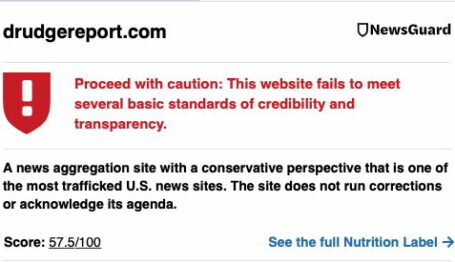Deception & Misdirection
Seeing the Statrix: Step by Step


Seeing the Statrix
Invisible and Omnipresent | Step by Step | Unlearning Entrenched Education | A Cure for Healthcare
Summary: What is the biggest drawback to government’s involvement in American life? Higher taxes? Onerous regulation? Barriers to innovation? While all of these inconveniences are the result of government, it is the loss of imagination that is most costly to those living in systems controlled by the state. Find out how regulatory capture and crony capitalism limit the possibilities that innovators can dream up for improving health, education, and transportation.
The Seven Steps of Creating the Statrix
There are seven steps in creating the statrix. They are not always followed in order, but they are usually present in one way or another in many government programs. They are:
1) Concept: A service is proposed, a tax break is suggested, or a law is suggested, usually to help the poor, fix a perceived market failure, or provide some other purported public benefit.
2) Implementation: The government has a unique ability to force people to comply with its mandates. Unlike voluntary transactions, the government can use force to create things no one wants; it can also use force to create things everybody wants. The government can use force to change who pays taxes and how much, who is allowed to practice a profession, what businesses can exist, and so much more. The problem is that government officials often don’t know what the people really want, or they don’t care.
3) Reorganization: Government benefits, projects, and programs incentivize people to live their lives in different ways and even in different places. A tax break can change an entire business model. A metro or bus line can drastically alter property values and change where people live. A licensing regulation can affect what type of businesses and services are offered.
4) Crowding Out: It’s very difficult to compete against the government. If a competitor, such as bus service, is getting a subsidy, then any competing transportation service that doesn’t get the subsidy is at a disadvantage. The same is true for competing against subsidized public schools, trying to create alternative methods of delivering or paying for health care, creating different methods of unsubsidized agricultural production, and more.
5) Collusion: A lot of interested parties are created when the government takes over or heavily regulates an industry, service, or benefit. Some of them, like unionized metro workers or teachers, are direct beneficiaries of government services or programs. Others are more indirect beneficiaries—property owners and businesses near public transportation stops, businesses in the health care industry that depend upon a specific subsidy or government-authorized organizational structure, textbook publishers that depend on a centralized public-school model, housing construction companies that depend on tax breaks and other subsidies, the list goes on. All those groups collude—even if indirectly—to ensure that things don’t change.
6) Inadequacy: There are a variety of reasons the government runs things inadequately. Often, the incentives are not there to do a good job, or they are so weak and attenuated from the point of service that they’re inadequate to signal what should be done. Unionized workforces strive to protect employees, often at the expense of quality services. Unionization can reduce accountability for poor performance, as can other worker protections that help ensure government employees are rarely fired. In the 2017 Federal Employee Viewpoint Survey, only 31 percent of employees believed that “steps are taken to deal with a poor performer who cannot or will not improve.”
7) Prohibition: Finally, after the government has implemented something with force, reorganized the world, crowded-out the competition, colluded with the stakeholders, and failed to run it adequately, it starts prohibiting competitors. This has been seen recently in cities that prohibit or limit ride-sharing services to prop up taxicab cartels. But cities have been prohibiting alternate methods of transportation for decades. Jitney cabs were privately driven hybrid bus/taxis that became incredibly popular in the 1910s and 20s, only to be quickly prohibited.
Alternate methods of schooling that don’t meet regulators’ standards are prohibited, as are many methods of providing medical care. In some countries, such as Germany, homeschooling is illegal, and many Canadian provinces put severe restrictions on privately provided medical care. If alternatives haven’t been fully eliminated by crowding-out competitors and reorganizing business models around government programs, prohibition can make them totally disappear, thus completing the statrix.
Having given an overview of the process of creating the statrix, the rest of the article will focus on two case studies that will better illustrate the concept. The statrix, however, is everywhere, and it is by no means limited to the two areas I’ll focus on: public education and health care. Public education and health care, however, are particularly good examples because government involvement has been so longstanding and substantial that people cannot imagine alternatives. In both sectors, the steps of the statrix yielded a predictable outcome: ossified, convoluted, and frustrating services where innovation is rare and satisfaction is even rarer. Many people are unable to imagine alternatives, however, so they begrudgingly accept the world as it is.
How did that happen?
In the next installment of Seeing the Statrix, learn how the public school system cements government schools and limits educational reform.



